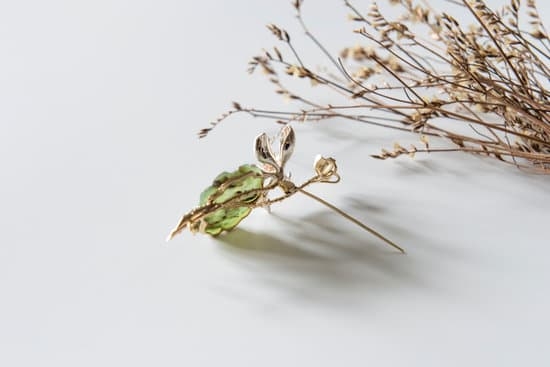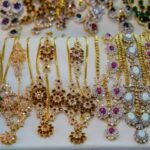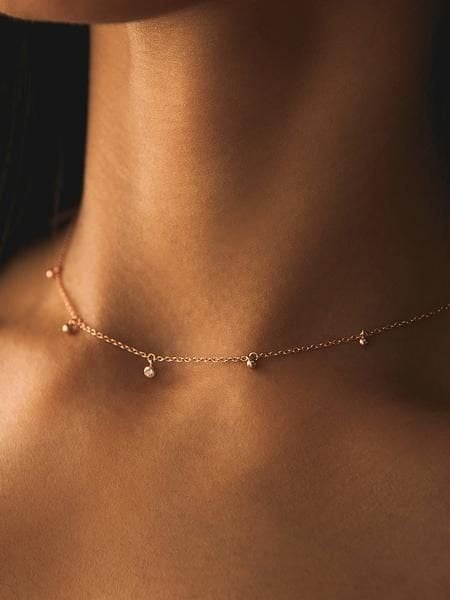Are you considering starting your own fine jewelry business? The allure of the fine jewelry industry lies in its ability to create timeless pieces of beauty and craftsmanship that hold great sentimental value for their wearers. In this article, we will explore the essential steps and considerations for aspiring entrepreneurs looking to venture into the world of fine jewelry.
To successfully start a fine jewelry business, one must have a keen understanding of the market and be able to navigate the complexities of sourcing materials, design, production, legalities, financial management, and more. This informative guide will provide valuable insights into each aspect involved in establishing a successful jewelry business.
From conducting thorough market research to mastering the art of branding and marketing, this article aims to equip you with the knowledge and resources necessary to make your mark in the competitive world of fine jewelry. Whether you are considering an online store or a brick-and-mortar location, this comprehensive guide will help you create a solid foundation for your future success as a jewelry entrepreneur.
Market Research
To start, identify your target audience. Consider factors such as age, gender, income level, and personal preferences. Understanding who your ideal customers are will help you tailor your designs and marketing messages to resonate with them. Additionally, researching the competition will give you a better understanding of what other jewelry businesses are offering and how you can differentiate yourself in the market.
One way to conduct market research is by using online surveys or questionnaires to gather feedback from potential customers. You can also analyze industry reports and trends to understand consumer behavior and preferences. By combining both qualitative and quantitative data, you can develop a well-rounded understanding of your target audience and competition.
| Target Audience Insights | Competition Analysis |
|---|---|
| Age: 25-45, primarily females with disposable income | Identify key competitors in the local area as well as online |
| Preference for minimalist, modern jewelry designs | Analyze pricing, product offerings, and customer reviews of competitors |
| Income level: $50,000-$100,000 annually | Evaluate strengths and weaknesses of competitors’ branding and marketing strategies |
Creating a Business Plan
Setting the Vision
The first step in creating a business plan for your fine jewelry business is to establish your vision. What do you want to achieve with your jewelry brand? What sets you apart from other jewelry businesses? Consider what kind of image and reputation you want your brand to have in the market.
Defining Goals
Once you have a clear vision in mind, it’s important to set specific and achievable goals for your jewelry business. Whether it’s sales targets, the number of new designs to launch, or reaching a certain market share, these goals will guide your actions and help measure your progress.
Strategizing for Success
Finally, outline the strategies you will implement to achieve your goals and realize your vision. This may include marketing tactics, production and design processes, sales channels, and more. A comprehensive strategy will help you stay focused and make informed decisions as you build and grow your fine jewelry business.
By setting a strong vision, defining clear goals, and strategizing for success, you can lay the foundation for a successful fine jewelry business. A well-thought-out business plan will not only guide your actions but also attract potential investors and partners who believe in the potential of your brand.
Legalities and Regulations
Navigating the legal requirements for a jewelry business can seem daunting, but it is an essential step in starting a fine jewelry business. There are several key aspects to consider when it comes to legalities and regulations in the industry, from obtaining the necessary permits and licenses to understanding trademark and copyright laws.
Permits and Licenses
Before launching a fine jewelry business, it is crucial to research and obtain all the required permits and licenses. This may include a business license, resale permit, and possibly even special permits for handling precious metals and gemstones. Each location may have different requirements, so it’s important to thoroughly research the specific regulations in your area.
Trademark and Copyright Laws
In the world of fine jewelry, protecting intellectual property is vital. Understanding trademark and copyright laws is essential for safeguarding unique designs and brand identity. It’s important to consider trademarking the business name or logo, as well as registering any original jewelry designs with the appropriate authorities.
Compliance With Industry Standards
Compliance with industry standards for quality and ethical sourcing is also a significant part of navigating the legal requirements in the fine jewelry business. This may involve adhering to standards set by organizations such as the Kimberley Process Certification Scheme for diamonds or ensuring ethical sourcing of precious metals. Staying informed about these standards and maintaining compliance will not only keep your business legally sound but also build trust with customers who value sustainability and ethical practices.
Understanding legalities and regulations ensures that aspiring entrepreneurs have a solid foundation on which to build their fine jewelry business. By navigating these requirements successfully, they can establish a reputable brand that complies with industry standards while protecting their designs and intellectual property.
Sourcing Materials
When starting a fine jewelry business, one of the most crucial aspects is sourcing high-quality gems and precious metals. The quality of your materials will directly impact the value and appeal of your jewelry pieces. Therefore, it is essential to know where and how to find the best materials for your designs.
One of the primary ways to source gems and precious metals is through reputable suppliers and wholesalers. These suppliers often have a wide range of options to choose from, allowing you to select the specific gemstones and metals that align with your design vision. Additionally, building relationships with trusted suppliers can ensure consistent quality and reliable access to materials for your future jewelry creations.
Another effective way to find top-quality gems and precious metals is by attending trade shows and industry events. These events provide an opportunity to personally inspect the materials, evaluate their quality, and network with potential suppliers. It also allows you to stay updated on the latest trends and innovations in the industry, ensuring that your designs are current and appealing to customers.
Furthermore, online platforms have become increasingly popular for sourcing materials. Many reputable suppliers now have online stores or platforms where you can browse their inventory, place orders, and have materials shipped directly to your location. However, it’s important to exercise caution when purchasing online and verify the credibility of the supplier before making any significant purchases.
| Sourcing Method | Advantages |
|---|---|
| Suppliers/Wholesalers | Wide range of options, consistent quality, reliable access |
| Trade Shows/Events | Personal inspection of materials, networking opportunities, staying updated on industry trends |
| Online Platforms | Convenience of browsing inventory and placing orders from anywhere. |
Design and Production
When starting a fine jewelry business, one of the most crucial aspects is the design and production of unique and marketable jewelry pieces. The process of creating stunning jewelry requires a combination of creativity, technical skill, and an understanding of market trends. To begin, aspiring entrepreneurs should focus on developing a signature style that sets their jewelry apart from competitors. This can involve experimenting with different materials, techniques, and artistic inspirations to create a cohesive and recognizable brand aesthetic.
Once a signature style has been established, it’s important to ensure that the production process is efficient while maintaining the highest quality standards. This may involve partnering with skilled artisans or investing in training to develop the necessary craftsmanship in-house. Additionally, entrepreneurs should consider sustainability in their material sourcing and production methods, as ethical and eco-friendly practices are becoming increasingly important to consumers.
In terms of marketability, it’s essential for jewelry designers to stay informed about current fashion trends, customer preferences, and industry shifts. By understanding what resonates with their target audience, jewelry entrepreneurs can create pieces that are not only visually appealing but also commercially viable.
Researching competitors and attending trade shows can provide valuable insights into what is currently popular in the market and help guide the design process towards creating desirable products. Ultimately, producing unique and marketable jewelry pieces requires a delicate balance between creativity and commercial appeal.
Marketing and Branding
When starting a fine jewelry business, creating a strong brand and effectively reaching customers are crucial for success. Here are some key strategies to consider for marketing and branding your jewelry business:
- Identify your target audience: Research and understand the demographics, preferences, and purchasing behavior of your potential customers. This will help you tailor your marketing efforts to effectively reach and engage with them.
- Develop a unique brand identity: Your brand should reflect the values, aesthetic, and story behind your jewelry. Consider aspects such as your logo, packaging, and overall visual identity to create a memorable brand that stands out in the market.
- Utilize social media and online platforms: In today’s digital age, having a strong online presence is essential for reaching customers. Utilize social media platforms like Instagram, Facebook, and Pinterest to showcase your jewelry, engage with followers, and drive traffic to your website or online store.
- Collaborate with influencers and industry professionals: Partnering with relevant influencers or industry professionals can help increase brand visibility and credibility. Seek opportunities for collaborations or sponsorships that align with your brand’s values and target audience.
In addition to these strategies, investing in professional photography of your jewelry pieces can significantly enhance the visual appeal of your brand across various marketing channels. By carefully considering these elements as part of your marketing strategy, you can effectively build a strong brand presence while reaching customers who are likely to be interested in your fine jewelry offerings.
Setting Up Shop
Deciding between an online store or brick-and-mortar location for your fine jewelry business is a crucial step in setting up shop. Each option has its own set of pros and cons, so it’s important to carefully consider which will best align with your business goals and target audience.
Here are some factors to consider when deciding between an online store or brick-and-mortar location:
- Target Audience: Consider the demographics and shopping preferences of your target customers. If they are more likely to purchase fine jewelry in person, a physical store may be the better option. On the other hand, if your target audience prefers the convenience of online shopping, an e-commerce platform might be more suitable.
- Costs: Compare the costs associated with setting up and maintaining an online store versus a brick-and-mortar location. This includes expenses such as rent, utilities, website maintenance, and marketing efforts.
- Brand Image: Consider how each option will impact the perceived value and exclusivity of your fine jewelry brand. Some customers may view physical stores as more prestigious, while others may appreciate the accessibility and convenience of online shopping.
Ultimately, the decision between an online store or brick-and-mortar location will depend on a variety of factors specific to your business. It may also be worth considering a combination of both options through a hybrid approach that caters to different customer preferences. By carefully weighing the benefits and challenges of each choice, you can determine which setting will best support the success of your fine jewelry business.
Financial Management
Starting a fine jewelry business involves more than just creating beautiful pieces – it also requires careful financial management. From budgeting and pricing to managing cash flow, these aspects are crucial in ensuring the success and sustainability of your business.
One of the first steps in financial management for a fine jewelry business is setting a budget. This includes determining the costs of materials, production, marketing, and other operational expenses. By having a clear understanding of your expenses, you can make informed decisions about pricing and sales strategies that will help you turn a profit.
When it comes to pricing your jewelry pieces, it’s important to consider factors such as the quality of materials used, craftsmanship, market demand, and competition. Additionally, understanding your target audience’s willingness to pay for your products can also influence your pricing strategy. Researching industry standards and speaking with industry experts can provide valuable insights into how to price your jewelry competitively while maintaining profitability.
Managing cash flow is another critical aspect of running a successful fine jewelry business. This involves monitoring incoming revenue and outgoing expenses to ensure that there is enough liquidity to cover operational costs, invest in new inventory or equipment, and support growth. Implementing systems for invoicing, payment collection, and vendor management can help maintain healthy cash flow for your business.
Mastering these financial management skills is essential for aspiring entrepreneurs looking to start a fine jewelry business successfully. By carefully budgeting, pricing strategically, and managing cash flow effectively, you can set the foundation for a profitable and sustainable venture in the competitive world of fine jewelry.
Conclusion
In conclusion, starting a fine jewelry business can be an exciting and rewarding venture for aspiring entrepreneurs. The key to success lies in thorough market research, a well-thought-out business plan, and a strong focus on design, production, marketing, branding, and financial management.
Understanding the target audience and competition is crucial in order to carve out a unique position in the market. Additionally, navigating the legal requirements for a jewelry business and sourcing high-quality materials are essential steps in ensuring the legitimacy and quality of your products.
It’s important to remember that building a successful fine jewelry business takes time, dedication, and perseverance. By following the advice provided in this article and staying committed to your vision and goals, aspiring jewelry entrepreneurs can position themselves for success in this competitive industry. With creativity, passion, and strategic planning, anyone can turn their dream of owning a fine jewelry business into a reality.
Frequently Asked Questions
Is Selling Fine Jewelry Profitable?
Selling fine jewelry can be profitable, but success in this industry requires a deep understanding of the market, customer preferences, and attention to quality and craftsmanship. It also involves building relationships with suppliers, designers, and potentially international partners. Factors such as pricing, marketing, and brand reputation also play a significant role in determining profitability.
How Do I Start a Fine Jewelry Brand?
Starting a fine jewelry brand involves thorough research of the market and potential competitors, as well as identifying your unique value proposition. It’s important to source high-quality materials and find skilled artisans or manufacturers to bring your designs to life.
Building brand identity through storytelling, creating a strong visual presence, and providing excellent customer service are also crucial steps in launching and growing a successful fine jewelry brand.
How Do I Get Into the Fine Jewelry Industry?
Getting into the fine jewelry industry can involve various paths – from obtaining formal education in gemology or jewelry design to gaining hands-on experience through apprenticeships or internships with established jewelers. Networking within the industry can also open doors for opportunities and partnerships.
Understanding market trends, consumer behavior, and having a keen eye for quality will also be essential skills needed to succeed in the competitive world of fine jewelry.

Welcome to my jewelry blog! My name is Sarah and I am the owner of this blog.
I love making jewelry and sharing my creations with others.
So whether you’re someone who loves wearing jewelry yourself or simply enjoys learning about it, be sure to check out my blog for insightful posts on everything related to this exciting topic!





